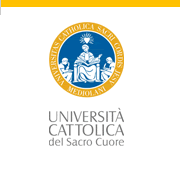|

|
ABS16 - 2016 Applied Bayesian Statistics School
BAYES,
BIG DATA, AND THE INTERNET
Villa
del Grumello, Como, Italy
29th
August - 2nd September, 2016
|

|
|
|

|
ABS SCHOOLS
The Applied Bayesian
Statistics summer school has been running since 2004. From 2012
it is organized by
Since 2014 the school is organized in cooperation with Centro di Cultura Scientifica "Alessandro Volta"
The school aims
to present state-of-the-art Bayesian applications, inviting leading
experts in their field. Each year a different topic is chosen. Past
editions were devoted to Gene Expression Genomics, Decision
Modelling in Health Care, Spatial Data in Environmental and
Health Sciences, Bayesian Methods and Econometrics, Bayesian
Decision Problems in Biostatistics and Clinical Trials, Bayesian
Methodology for Clustering, Classification and Categorical Data
Analysis, Bayesian Machine Learning with Biomedical
Applications, Hierarchical Modeling for Environmental
Processes, Stochastic Modelling for Systems Biology, Bayesian
Methods for Variable Selection with
Applications to High-Dimensional Data and Applied Bayesian
Nonparametrics, Modern Bayesian Methods and Computing for the Social
Sciences.
TOPIC
AND LECTURER
The topic chosen for the 2016 school
is Bayes, Big Data, and the Internet.
The lecturer is:
Dr Steve
Scott, Director of Statistics
Research Google, USA
He will be assisted by Ilaria
Bianchini (Politecnico di Milano, Italy).
COURSE
OUTLINE
Day 1: One of the main
applications of statistics at internet companies is to A/B testing (e.g.
to determine which version of a web site is most effective).
Standard statistical methods for A/B testing using static experimental
design is typically dominated (in terms of cost) by sequential methods
based on Thompson sampling. The first day of the course uses
Thompson sampling to motivate standard low dimensional statistical
modeling such as beta-binomial, Poisson-gamma and normal-normal
models. We will review Monte Carlo method for computing with
Bayesian models, including Gibbs sampling, Metropolis-Hastings, and slice
sampling.
Day 2: Very quickly after implementing an experiment, one discovers that
more than one factor needs to be tested (e.g. you need to test whether the
button should be red or blue, AND whether it should be located on the left
or the right of the page). You also need to determine whether the
optimal design varies according to various contextual factors (e.g.
whether the page is shown on the weekend or on a week day). These
factors can be handled within the Thompson sampling framework by extending
the reward distribution to various generalized linear models. The
second day of the course will discuss Bayesian regression in linear and
generalized linear models using data augmentation. Probit, logit,
Poisson, and student T models will be covered.
Day 3: If the number of factors to be tested (or number of contexts to be
controlled for) is very large, then sparse models must be
considered. Sparsity can be introduced into a Bayesian model using a
"spike-and-slab" prior that places some prior mass at zero for each
coefficient in a linear model. The data can then move posterior mass
between the "spike" (at zero) and "slab" (nonzero) portions of the
posterior distribution.
Day 4: One valuable aspect of internet data is that it occurs in nearly
real time, while many official statistics are released as
monthly or quarterly time series. One way to model these data is
with dynamic linear models. These models can combine time series model
(capturing the target series' past behavior) with a sparse regression
component (capturing the impact of contemporaneous internet data).
We will work on examples using economic data from FRED (the St. Louis
Federal Reserve Economic Database) and data from Google trends.
Day 5: we will discuss methods that can be applied when facing "big" data
that must be distributed across several machines.
INTENDED PARTICIPANTS AND PREREQUISITES
This
course is intended for students with little or no background in
Bayesian statistics, who would like to use applied Bayesian methods.
Students should have a basic familiarity with R, and some elementary
knowledge of probability (so we can talk about "binomial" models and
"gamma" priors). Some background in linear models will be
helpful but is not strictly necessary.
reading
The course will not follow a specific text. Several good
textbooks on Bayesian inference include.
* Bayesian Data Analysis (Gelman, Carlin, Stern, Dunson, Vehtari,
Rubin)
* Bayesian Methods and Marketing (Rossi, Allenby, McCulloch)
* Bayesian Computation with R (Albert)
Useful Papers:
* George and McCulloch (1997, Statistica Sinica) "Approaches for
Bayesian Variable Selection"
* Scott and Varian (2013) Predicting the present with Bayesian
Structural Time Series
* Scott (2010) A Modern Bayesian Look at the Multi-Armed Bandit
* Bayes and Big Data: The consensus Monte Carlo algorithm
SOFTWARE
We
will use the following R packages (available from CRAN)
* BoomSpikeSlab
* bsts
LOCATION AND
SCHEDULE
The
2016 school will be held at Villa
del Grumello, a magnificent villa located in the city of
Como, along the Lake Como shoreline.
Please note that the number of available
places is limited.
The
school will start on Monday, August , 29th, and it will
end on Friday, September, 2th .
INFORMATION

